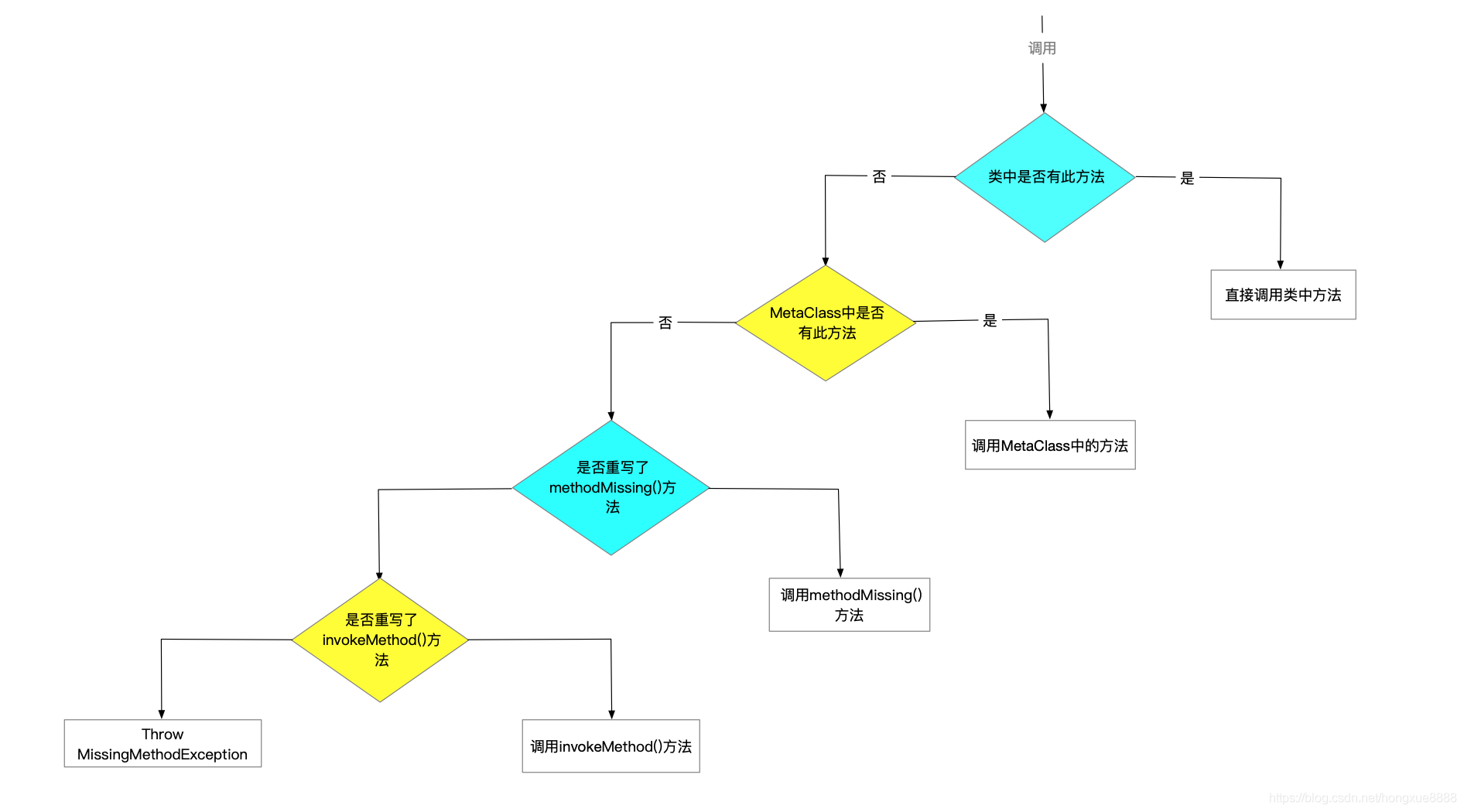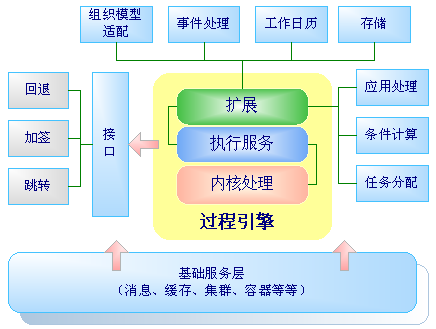文章目录
- groovy中的变量
- 变量的类型
- 变量的定义
- 字符串
- 转义字符
- 三引号
- 双引号:可扩展的字符串
- String的来源
- 字符串填充
- 字符串比较
- 获取字符
- 字符串减法
- 其他方法
- 逻辑控制
- switch
- 对范围的for循环
- 对List的循环
- 对Map进行循环
- 闭包
- 闭包定义和调用
- 闭包参数
- 闭包返回值
- 与基本类型结合使用
- 与String结合使用
- 与数据结构结合使用
- 与文件结合使用
- 闭包关键变量
- 闭包的委托策略
- 数据结构
- 列表
- 映射
- 范围
- 面向对象
- 接口
- 元编程
groovy_2">groovy中的变量

变量的类型
int x = 10
double y = 3.14
println x.class
println y.class
打印
class java.lang.Integer
class java.lang.Double
所以groovy中没有基本类型变量的,所有类型都是对象类型。
变量的定义
def x = 10
def y = 3.14
def z = 'Hongx'
println x.class
println y.class
println z.class
打印
class java.lang.Integer
class java.math.BigDecimal
class java.lang.String
定义变量之前并不需要一定提前定义它的变量类型,而通过def去定义,编译器会自动去推断你的变量类型。
def x = 10
println x.class
x = 'hongx'
println x.class
class java.lang.Integer
class java.lang.String
字符串

def name = 'a single string'
println name.class
class java.lang.String
转义字符
def name = 'a single \'a\' string'
println name
a single ‘a’ string
三引号
def name = '''
one
two
three
'''
println name
line one
two
three
双引号:可扩展的字符串
def name = "hongx"
println name.class
def sayHello = "Hello ${name}"
println sayHello
println sayHello.class
class java.lang.String
Hello hongx
class org.codehaus.groovy.runtime.GStringImpl
def sum = "the sum is ${2+3}"//可扩展任意表达式
println sum
the sum is 5
def sum = "the sum is ${2+3}"//可扩展任意表达式
println sum.class
def result = echo(sum)
println result
println result.class
String echo(String msg){
return msg
}
class org.codehaus.groovy.runtime.GStringImpl
the sum is 5
class java.lang.String
说明String和GString这两种字符串类型是可以相互转换和调用的。
String的来源

字符串填充
def str = "groovy"
println str.center(10,'a')
println str.padLeft(10,'a')
println str.padRight(10,'a')
字符串比较
def str = "groovy"
def str2 = "Hello"
//println str.compareTo(str2)
println str > str2
true
获取字符
def str = "groovy"
println str[0]
println str[0..2]
g
gro
字符串减法
def str = "groovy"
def str2 = "o"
println str - str2
println str.minus(str2)
grovy
grovy
其他方法
def str = "groovy"
println str.reverse()
println str.capitalize()//首字符大写
def str2 = "123456"
println str.isNumber()
println str2.isNumber()
yvoorg
Groovy
false
true
逻辑控制

switch
def x = 1.23
def result
switch (x) {
case 'foo':
result = 'found foo'
break
case 'bar':
result = 'bar'
break
case [1.23, 4, 5, 6, 'inlist']: //列表
result = 'list'
break
case 12..30:
result = 'range' //范围
break
case Integer:
result = 'integer'
break
case BigDecimal:
result = 'big decimal'
break
default: result = 'default'
}
println result
list
对范围的for循环
def sum = 0
for (i in 0..9) {
sum += i
}
println sum
45
对List的循环
sum = 0
/**
* 对List的循环
*/
for (i in [1, 2, 3, 4, 5, 6, 7, 8, 9]) {
sum += i
}
println sum
45
对Map进行循环
/**
* 对Map进行循环
*/
sum = 0
for (i in ['lili': 1, 'luck': 2, 'xiaoming': 3]) {
sum += i.value
}
println sum
6
闭包
闭包定义和调用
def clouser = { println 'hello groovy'}
clouser.call()
hello groovy
闭包参数
def clouser = { String name -> println "hello ${name}"}
clouser.call('groovy')
clouser('groovy')
箭头之前是参数部分,箭头之后是闭包体。
多个参数
def clouser = { String name ,int age -> println "hello ${name} ${age}"}
clouser.call('groovy',18)
clouser('groovy',18)
默认参数
def clouser = { println "hello ${it}"}
clouser.call('groovy')
hello groovy
闭包返回值
def clouser = { String name -> return "hello ${name}"}
def result = clouser('groovy');
println result;
hello groovy
def clouser = { String name -> println "hello ${name}"}
def result = clouser('groovy');
println result;
hello groovy
null
与基本类型结合使用
upto使用
//求阶乘
int fab(int number){
int result = 1
1.upto(number,{num -> result *= num})
return result
}
println fab(4)
24
DefaultGroovyMethods的upto源码:
public static void upto(Number self, Number to, @ClosureParams(FirstParam.class) Closure closure) {
int self1 = self.intValue();
int to1 = to.intValue();
if (self1 > to1) {
throw new GroovyRuntimeException("The argument (" + to + ") to upto() cannot be less than the value (" + self + ") it's called on.");
} else {
for(int i = self1; i <= to1; ++i) {
closure.call(i);
}
}
}
downto使用
int fab2(int number){
int result = 1
number.downto(1,{num -> result *= num})
return result
}
也可写成这样:
int fab3(int number){
int result = 1
number.downto(1){num -> result *= num}
return result
}
DefaultGroovyMethods的downto源码:
public static void downto(Number self, Number to, @ClosureParams(FirstParam.class) Closure closure) {
int self1 = self.intValue();
int to1 = to.intValue();
if (self1 < to1) {
throw new GroovyRuntimeException("The argument (" + to + ") to downto() cannot be greater than the value (" + self + ") it's called on.");
} else {
for(int i = self1; i >= to1; --i) {
closure.call(i);
}
}
}
times使用(累加)
int call(int number){
int result = 0
number.times {
num -> result += num
}
return result
}
println call(101)
5050
DefaultGroovyMethods的times源码
public static void times(Number self, @ClosureParams(value = SimpleType.class,options = {"int"}) Closure closure) {
int i = 0;
for(int size = self.intValue(); i < size; ++i) {
closure.call(i);
if (closure.getDirective() == 1) {
break;
}
}
}
与String结合使用
//字符串与闭包结合使用
String str = 'the 2 and 3 is 5'
str.each {
String temp -> print temp.multiply(2)
}
tthhee 22 aanndd 33 iiss 55
//字符串与闭包结合使用
String str = 'the 2 and 3 is 5'
println str.each {}
the 2 and 3 is 5
String str = 'the 2 and 3 is 5'
//find来查找符合条件的第一个
println str.find{
String s -> s.isNumber()
}
2
find源码:
public static Object find(Object self, Closure closure) {
BooleanClosureWrapper bcw = new BooleanClosureWrapper(closure);
Iterator iter = InvokerHelper.asIterator(self);
Object value;
do {
if (!iter.hasNext()) {
return null;
}
value = iter.next();
} while(!bcw.call(new Object[]{value}));
return value;
}
def list = str.findAll{
String s -> s.isNumber()
}
println list.toListString()
[2, 3, 5]
findAll源码:
public static Collection findAll(Object self, Closure closure) {
List answer = new ArrayList();
Iterator iter = InvokerHelper.asIterator(self);
return findAll((Closure)closure, (Collection)answer, (Iterator)iter);
}
println str.any{
String s -> s.isNumber()
}
true
any源码:
public static boolean any(Object self, Closure predicate) {
return any(InvokerHelper.asIterator(self), predicate);
}
public static <T> boolean any(Iterator<T> self, @ClosureParams(FirstGenericType.class) Closure predicate) {
BooleanClosureWrapper bcw = new BooleanClosureWrapper(predicate);
do {
if (!self.hasNext()) {
return false;
}
} while(!bcw.call(new Object[]{self.next()}));
return true;
}
println str.every{
String s -> s.isNumber()
}
false
every源码:
public static boolean every(Object self, Closure predicate) {
return every(InvokerHelper.asIterator(self), predicate);
}
public static <T> boolean every(Iterator<T> self, @ClosureParams(FirstGenericType.class) Closure predicate) {
BooleanClosureWrapper bcw = new BooleanClosureWrapper(predicate);
do {
if (!self.hasNext()) {
return true;
}
} while(bcw.call(new Object[]{self.next()}));
return false;
}
def list2 = str.collect{
String s -> s.toUpperCase()
}
print list2.toListString()
[T, H, E, , 2, , A, N, D, , 3, , I, S, , 5]
与数据结构结合使用
与文件结合使用
闭包关键变量
this
owner
delegate
指向最近封闭类对象
//闭包的三个重要变量:this owner delegate
def scriptClouser = {
println "scriptClouser this:" + this// 闭包定义处的类
println "scriptClouser this:" + owner // 闭包定义处的类或者对象
println "scriptClouser this:" + delegate // 任意对象,默认与owner一致
}
scriptClouser.call()
scriptClouser this:variable.clouserstudy@306e95ec
scriptClouser this:variable.clouserstudy@306e95ec
scriptClouser this:variable.clouserstudy@306e95ec
//定义一个内部类
class Person{
//静态类型的闭包
def static classClouser = {
println "classClouser this:" + this// 闭包定义处的类
println "classClouser this:" + owner // 闭包定义处的类或者对象
println "classClouser this:" + delegate // 任意对象,默认与owner一致
}
def static say(){
def classClouser = {
println "methodClassClouser this:" + this// 闭包定义处的类
println "methodClassClouser this:" + owner // 闭包定义处的类或者对象
println "methodClassClouser this:" + delegate // 任意对象,默认与owner一致
}
classClouser.call()
}
}
Person.classClouser.call()
Person.say()
classClouser this:class variable.Person
classClouser this:class variable.Person
classClouser this:class variable.Person
methodClassClouser this:class variable.Person
methodClassClouser this:class variable.Person
methodClassClouser this:class variable.Person
//闭包中定义一个闭包
def nestClouser = {
def innerClouser = {
println "innerClouser this:" + this
println "innerClouser this:" + owner
println "innerClouser this:" + delegate
}
innerClouser.call()
}
nestClouser.call()
innerClouser this:variable.clouserstudy@52af26ee
innerClouser this:variable.clouserstudy$_run_closure1@342c38f8
innerClouser this:variable.clouserstudy$_run_closure1@342c38f8
this指向闭包所在类,owner、delegate指向最近闭包对象
Person p = new Person()
def nestClouser = {
def innerClouser = {
println "innerClouser this:" + this
println "innerClouser this:" + owner
println "innerClouser this:" + delegate
}
innerClouser.delegate = p//修改默认的delegate
innerClouser.call()
}
nestClouser.call()
innerClouser this:variable.clouserstudy@61001b64
innerClouser this:variable.clouserstudy$_run_closure1@55634720
innerClouser this:objectorention.Person@4b0d79fc
闭包的委托策略
class Student{
String name
def preety = {
"My name is ${name}"
}
String toString(){
preety.call()
}
}
class Teacher{
String name
}
def stu = new Student(name: 'Sarash')
def tea = new Teacher(name: 'Amanda')
stu.preety.delegate = tea
stu.preety.resolveStrategy = Closure.DELEGATE_FIRST
println stu.toString()
My name is Amanda
数据结构
列表
//def list = new ArrayList() //java的定义方式
def list = [1, 2, 3, 4, 5]
println list.class
println list.size()
class java.util.ArrayList
5
定义数组:
def array = [1, 2, 3, 4, 5] as int[]
int[] array2 = [1, 2, 3, 4, 5]
列表排序
/**
* 列表的排序
*/
def sortList = [6, -3, 9, 2, -7, 1, 5]
//Comparator mc = { a, b ->
// a == b ? 0 : Math.abs(a) < Math.abs(b) ? -1 : 1
//}
//Collections.sort(sortList, mc)
sortList.sort { a, b ->
a == b ? 0 : Math.abs(a) < Math.abs(b) ? -1 : 1
}
println sortList
[1, 2, -3, 5, 6, -7, 9]
字符串排序
def sortStringList = ['abc', 'z', 'Hello', 'groovy', 'java']
sortStringList.sort { it -> return it.size() }
println sortStringList
[z, abc, java, Hello, groovy]
列表的查找
def findList = [-3, 9, 6, 2, -7, 1, 5]
int result = findList.find { return it % 2 == 0 }
println result
6
def findList = [-3, 9, 6, 2, -7, 1, 5]
def result = findList.findAll { return it % 2 != 0 }
println result.toListString()
[-3, 9, -7, 1, 5]
def findList = [-3, 9, 6, 2, -7, 1, 5]
def result = findList.any { return it % 2 != 0 }
println result
true
def findList = [-3, 9, 6, 2, -7, 1, 5]
def result = findList.every { return it % 2 == 0 }
println result
false
def findList = [-3, 9, 6, 2, -7, 1, 5]
println findList.min { return Math.abs(it) }
println findList.max { return Math.abs(it) }
def num = findList.count { return it % 2 == 0 }
println num
1
9
2
映射
//def map = new HashMap()
def colors = [red : 'ff0000',
green: '00ff00',
blue : '0000ff']
//索引方式
println colors['red']
println colors.red
ff0000
ff0000
def colors = [red : 'ff0000',
green: '00ff00',
blue : '0000ff']
//添加元素
colors.yellow = 'ffff00'
println colors.toMapString()
[red:ff0000, green:00ff00, blue:0000ff, yellow:ffff00]
def colors = [red : 'ff0000',
green: '00ff00',
blue : '0000ff']
colors.complex = [a: 1, b: 2]
println colors.toMapString()
[red:ff0000, green:00ff00, blue:0000ff, complex:[a:1, b:2]]
/**
* Map操作详解
*/
def students = [
1: [number: '0001', name: 'Bob',
score : 55, sex: 'male'],
2: [number: '0002', name: 'Johnny',
score : 62, sex: 'female'],
3: [number: '0003', name: 'Claire',
score : 73, sex: 'female'],
4: [number: '0004', name: 'Amy',
score : 66, sex: 'male']
]
//遍历Entry
students.each { def student ->
println "the key is ${student.key}, " +
" the value is ${student.value}"
}
//带索引的遍历
students.eachWithIndex { def student, int index ->
println "index is ${index},the key is ${student.key}, " +
" the value is ${student.value}"
}
//直接遍历key-value
students.eachWithIndex { key, value, index ->
println "the index is ${index},the key is ${key}, " +
" the value is ${value}"
}
the key is 1, the value is [number:0001, name:Bob, score:55, sex:male]
the key is 2, the value is [number:0002, name:Johnny, score:62, sex:female]
the key is 3, the value is [number:0003, name:Claire, score:73, sex:female]
the key is 4, the value is [number:0004, name:Amy, score:66, sex:male]
index is 0,the key is 1, the value is [number:0001, name:Bob, score:55, sex:male]
index is 1,the key is 2, the value is [number:0002, name:Johnny, score:62, sex:female]
index is 2,the key is 3, the value is [number:0003, name:Claire, score:73, sex:female]
index is 3,the key is 4, the value is [number:0004, name:Amy, score:66, sex:male]
the index is 0,the key is 1, the value is [number:0001, name:Bob, score:55, sex:male]
the index is 1,the key is 2, the value is [number:0002, name:Johnny, score:62, sex:female]
the index is 2,the key is 3, the value is [number:0003, name:Claire, score:73, sex:female]
the index is 3,the key is 4, the value is [number:0004, name:Amy, score:66, sex:male]
//Map的查找
def entry = students.find { def student ->
return student.value.score >= 60
}
println entry
def entrys = students.findAll { def student ->
return student.value.score >= 60
}
println entrys
2={number=0002, name=Johnny, score=62, sex=female}
[2:[number:0002, name:Johnny, score:62, sex:female], 3:[number:0003, name:Claire, score:73, sex:female], 4:[number:0004, name:Amy, score:66, sex:male]]
def count = students.count { def student ->
return student.value.score >= 60 &&
student.value.sex == 'male'
}
println count
1
def names = students.findAll { def student ->
return student.value.score >= 60
}.collect {
return it.value.name
}
println names.toListString()
[Johnny, Claire, Amy]
def group = students.groupBy { def student ->
return student.value.score >= 60 ? '及格' : '不及格'
}
println group.toMapString()
[不及格:[1:[number:0001, name:Bob, score:55, sex:male]], 及格:[2:[number:0002, name:Johnny, score:62, sex:female], 3:[number:0003, name:Claire, score:73, sex:female], 4:[number:0004, name:Amy, score:66, sex:male]]]
/**
* 排序
*/
def sort = students.sort { def student1, def student2 ->
Number score1 = student1.value.score
Number score2 = student2.value.score
return score1 == score2 ? 0 : score1 < score2 ? -1 : 1
}
println sort.toMapString()
[1:[number:0001, name:Bob, score:55, sex:male], 2:[number:0002, name:Johnny, score:62, sex:female], 4:[number:0004, name:Amy, score:66, sex:male], 3:[number:0003, name:Claire, score:73, sex:female]]
范围
def range = 1..10
println range[0]
println range.contains(10)
println range.from
println range.to
1
true
1
10
//遍历
range.each {
println it
}
for (i in range) {
println i
}
def result = getGrade(75)
println result
def getGrade(Number number) {
def result
switch (number) {
case 0..<60:
result = '不及格'
break
case 60..<70:
result = '及格'
break
case 70..<80:
result = '良好'
break
case 80..100:
result = '优秀'
break
}
return result
}
良好
面向对象
接口
/**
* 1.groovy中默认都是public
*/
class Person implements Serializable {
String name
Integer age
def increaseAge(Integer years) {
this.age += years
}
/**
* 一个方法找不到时,调用它代替
*/
def invokeMethod(String name, Object args) {
return "the method is ${name}, the params is ${args}"
}
def methodMissing(String name, Object args) {
return "the method ${name} is missing"
}
}
def person = new Person(name: 'hongxue', age: 26)
println person.name
println person.age
hongxue
26
/**
* 接口中不许定义非public的方法
*/
interface Action {
void eat()
void drink()
void play()
}
class Cat implements Action{
@Override
void eat() {
}
@Override
void drink() {
}
@Override
void play() {
}
}
trait DefualtAction {
abstract void eat()
void play() {
println ' i can play.'
}
}
class Dog implements DefualtAction{
@Override
void eat() {
}
}
def dog = new Dog()
dog.play()
i can play.
元编程
方法调用流程

/**
* 1.groovy中默认都是public
*/
class Person implements Serializable {
String name
Integer age
def increaseAge(Integer years) {
this.age += years
}
/**
* 一个方法找不到时,调用它代替
*/
def invokeMethod(String name, Object args) {
return "the method is ${name}, the params is ${args}"
}
def methodMissing(String name, Object args) {
return "the method ${name} is missing"
}
}
println person.cry()
the method cry is missing
//为类动态的添加一个属性
Person.metaClass.sex = 'male'
def person = new Person(name: 'hongxue', age: 26)
println person.sex
person.sex = 'female'
println "the new sex is:" + person.sex
male
the new sex is:female
Person.metaClass.sex = 'male'
//为类动态的添加方法
Person.metaClass.sexUpperCase = { -> sex.toUpperCase() }
def person = new Person(name: 'hongxue', age: 26)
println person.sexUpperCase()
MALE
//为类动态的添加静态方法
Person.metaClass.static.createPerson = {
String name, int age -> new Person(name: name, age: age)
}
def person3 = Person.createPerson('fuhongxue', 26)
println person3.name + " and " + person3.age
fuhongxue and 26



